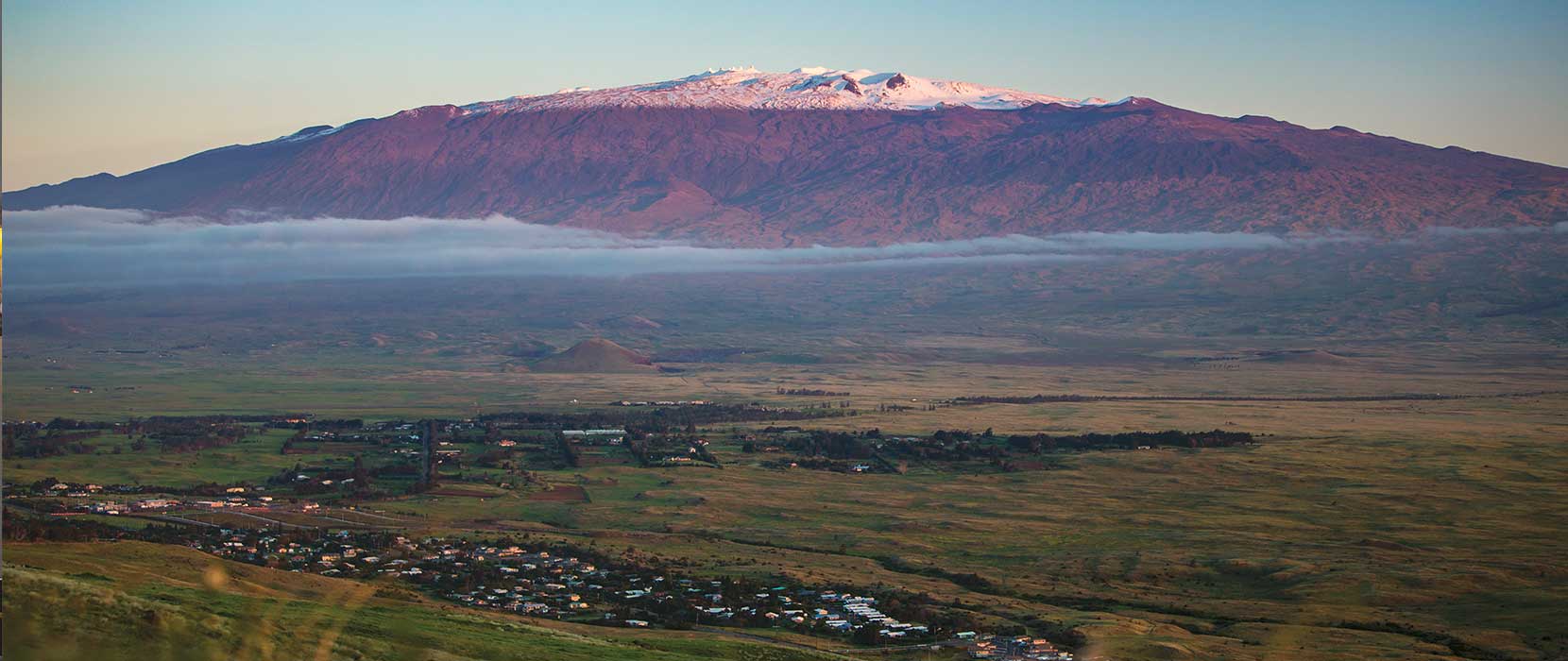
Portland Magazine
May 1, 2023
Maunakea is one of the most recognizable landmarks on Hawai‘i. Kale Kanaeholo ’18 sees more in it than meets the eye.
Story by Kale Kanaeholo ’18
 MAUNAKEA IS ONE of the most recognizable landmarks to my ancestors—my kūpuna—who ventured to the Hawaiian Islands centuries ago. As I stand here in sleepy Hilo town looking towards Maunakea, its silhouette rises from the horizon into the clouds and heavens above. When measured from the sea floor, Maunakea is taller than Mount Everest. It is a place that fills me with a sense of pride. I imagine my great-great-grandfather, James Kanaeholo, looking toward the same piko generations before, on a cool dewy morning just like today, as Maunakea is enveloped by mist.
MAUNAKEA IS ONE of the most recognizable landmarks to my ancestors—my kūpuna—who ventured to the Hawaiian Islands centuries ago. As I stand here in sleepy Hilo town looking towards Maunakea, its silhouette rises from the horizon into the clouds and heavens above. When measured from the sea floor, Maunakea is taller than Mount Everest. It is a place that fills me with a sense of pride. I imagine my great-great-grandfather, James Kanaeholo, looking toward the same piko generations before, on a cool dewy morning just like today, as Maunakea is enveloped by mist.
Multiple gods and goddesses—called akua—call this mountain home: Aiwohikupua, Kahanaiakeakua, Kahoupokane, Kalauakolea, Kūkahau‘ula, Līlīnoe, Mo‘oinanea, Waiau, and Poli‘ahu. The mountain has inspired songs and chants and stories that hold great meaning to my people.
In recent years, Maunakea has also served as a symbol of Native Hawaiian resilience. Ongoing external pressures, including the proposed construction of the Thirty Meter Telescope (TMT), threaten the Mauna’s sanctity and its fragile ecosystem. Endemic species of flora and fauna scattered across the landscape risk further decimation in pursuit of discovery.
Maunakea is a place of reverence and remembrance. Numerous burial sites and ancient shrines have been identified by different state and private entities, including within the final environmental impact statement for the TMT. Desecration at such a magnitude is akin to defiling a church for the purposes of understanding the meaning of life. We cannot, and should not, allow this sacred space to be suffocated or disturbed.
There is an ‘ōlelo no‘eau, a Hawaiian proverbial saying, that captures Maunakea’s essence: “Maunakea, kuahiwi ku ha‘o i ka mālie; Maunakea, standing alone in the calm.” Today Maunakea is not alone, nor has it ever been.
Mauna a Wākea is a wahi pana—it is, undeniably, a holy space.
Kale Kanaeholo ’18 is pursuing his doctorate in history at University of Hawai'i at Mānoa in Honolulu, Hawai'i.
University of Portland
5000 N. Willamette Blvd.,
Portland, Oregon 97203-5798
503.943.8000
This website uses cookies to track information for analytics purposes. You can view the full University of Portland privacy policy for more information.
